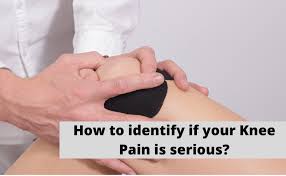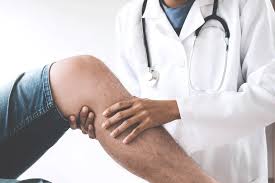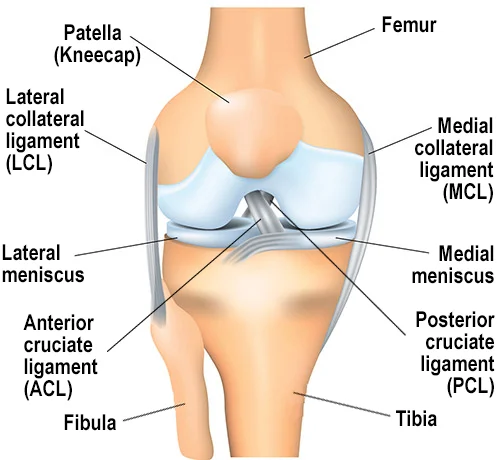Swelling
What is Swelling?
Swelling is a condition where a part of the body becomes enlarged due to the accumulation of fluid in the tissues. It can result from injury, inflammation, infection, or underlying medical conditions. Swelling may be localized (in one area) or generalized and is often accompanied by pain, redness, or warmth.
This suggests a fracture or a ligament injury, like an ACL rupture. By using a needle to extract some fluid from the joint, hemarthrosis can be identified. Swelling that happens within 24 hours following an injury is referred to as acute. A doctor should be consulted if the swelling occurs within the first two hours, as it is most likely related to hemarthrosis. External swelling is frequently caused by diseases, traumas, or insect stings.
If you have sudden, inexplicable swelling, you should contact a doctor right away, especially if you also have pain and unexpected weight gain
Symptoms of Swelling:
The enlargement of muscles or skin is typically apparent in cases of outward edema. An expanded bone, muscle, or organ may be visible on an imaging scan. Internal swelling is more difficult to see but can be diagnosed with a scan.
You may have a variety of symptoms if your swelling was caused by an injury, sting, or illness. These consist of:
- itching
- vomiting
- flatulence
- pain in the region that is impacted.
The following symptoms could appear if the edema is internal or not visible:
- nausea
- vomiting
- dizziness
- fever
- fatigue
- insomnia
- flu-like symptoms
- pain.
Causes of swelling:
External swelling may be caused by inflammation in your muscles, bones, or tissues. Visible swelling can also be caused by tumors and cysts. Despite being an internal ailment, fluid retention can also result in outward swelling.
The following are the most typical reasons for outward swelling:
- insect bites
- a rash
- hives
- injury
- fluid retention
- pregnancy
- menstruation
- hormonal changes
- infection.
Both localized and large external swelling are possible.
When only one particular location is swollen, this is referred to as localized swelling. A person who has an eye infection, for instance, might simply have swelling around their eyes.
A significant portion of the body experiences widespread edema. Usually, this indicates a serious sickness. It frequently results from an allergic response or fluid retention.
Additional frequent reasons for extensive edema include:
- kidney failure
- heart failure
- anaphylaxis
- A bite from a venomous insect.
Both broad and localized swelling, such as in the fingers and toes, can occur in people with diabetes or some types of cancer. Periodically, this type of swelling may manifest.
Diagnosis:
To determine the source of your swelling, your doctor may perform a number of tests. In order to determine whether the affected area is tender, they will first examine you physically and discuss your symptoms.
An ultrasound or other imaging test can provide more details regarding the cause of the edema. The reason for the edema may also be revealed by more sophisticated testing, like an MRI or CT scan.
Imaging examinations may show:
- artery and vein obstructions,
- inflammatory muscle or tissue
- Fractures of the bones
They can also reveal whether you have an affected colon or are retaining fluid. Additionally, tests will be performed on your blood and urine to see if the swelling is due to an illness.
Before any tests are conducted, you will receive an adrenaline injection if your swelling is the result of a severe allergic response. This drug will prevent the reaction from worsening.
Treatment of swelling:
In the beginning, keep in mind PRICE:
- Protection: Immobilization using a brace, bandage, or simply avoiding the body part can all be considered forms of protection.
- Rest: entails avoiding uncomfortable movement of the affected bodily portion. Although movement is beneficial and can speed up the healing process, it should not cause pain at this point.
- Ice.
- Compression: An ace wrap combined with compression. To reduce swelling, your doctor or athletic trainer can demonstrate how to bandage the affected area.
- Elevation: In order to prevent edema from returning to the body rather than accumulating in the extremities, where it is challenging to remove, elevation, or resting with the injury above heart level, is recommended. The reason for the swelling will determine how you are treated. You might require surgery to eliminate the swelling if it is due to a tumor or abscess.
Your doctor might prescribe an intensive treatment, like chemotherapy or radiation, to decrease the tumor if it is too large or in the wrong place to be surgically removed. The swelling and itching caused by rashes or hives can be reduced using over-the-counter antihistamines. Inflammation of the skin may also be reduced by topical steroids.
Prevention of swelling:
By appropriately treating your chronic condition or using medicine to treat it, you may be able to stop more swelling if it is causing internal or external swelling. When inflammation causes interstitial edema, medication is also used.
Being active, keeping circulation healthy, and taking precautions against inflammation or injury are all important ways to prevent swelling. Frequent exercise, such as walking or light stretching, promotes lymphatic drainage and blood flow. To lessen fluid accumulation, avoid standing or sitting still for extended periods of time and raise your legs occasionally.
Fluid retention can also be avoided by minimizing salt intake, wearing compression clothes, and drinking plenty of water. Following your doctor’s instructions and taking care of any underlying health issues is crucial for long-term prevention if you are prone to swelling because of medical conditions.
Prognosis:
- Swelling, however, may occasionally reflect a drug adverse effect or a more serious underlying medical issue. A patient should discuss the cause of their swelling with their physician and take action to address any underlying medical issues.
- The patient’s age, general health, and whether or not they have any underlying medical disorders that are contributing to the swelling will all affect how well the treatment works.
- By changing their lifestyle and doing as their doctor advises, the majority of patients experience some alleviation.
Conclusion:
There are several causes of swelling. A person might, for instance, have a broken bone, circulatory problems, or an underlying medical issue. In order to avoid or lessen future swelling, a person must obtain therapy for any underlying medical issues.
FAQs
How can leg swelling be prevented?
Wear compression stockings, raise your legs above your heart level, and think about eating a low-salt diet to help reduce leg edema. Frequent exercise, particularly walking, can also help decrease fluid accumulation and increase circulation.
Can swollen legs be relieved by walking?
To improve blood flow in your lower legs, move about. While standing, frequently move your ankles and feet, or contract and release your leg muscles.
What are some natural ways to minimize swelling?
Consider utilizing compression, elevating the affected area, applying ice or cold therapy, and drinking plenty of water to help naturally reduce swelling. Limiting salt consumption and including foods that reduce inflammation in your diet can also be beneficial. Additionally, massage can encourage smooth movement.
What is the best drug to treat body swelling?
Drugs like loop diuretics (such as furosemide/Lasix) are frequently used to treat edema, or body swelling, by encouraging the body to flush out extra fluid. Nonsteroidal anti-inflammatory medicines, or NSAIDs, can sometimes help reduce swelling by reducing inflammation.
What’s causing my swelling?
Numerous things, including wounds, infections, inflammation, and underlying medical disorders, might contribute to it. Allergies, autoimmune disorders, certain drugs, and circulatory issues are a few frequent culprits.
How can I instantly minimize swelling?
If at all feasible, elevate the swollen leg, apply a cold compress to the affected area, and think about using compression stockings or a bandage to minimize swelling as soon as possible. If necessary, move around and think about taking an over-the-counter pain treatment.
What causes my nighttime swelling?
Your legs and ankles may expand somewhat at night, which is normal. After all, you’ve been standing all day, and your extremities are likely retaining a little extra fluid due to the temperature, your nutrition, and other variables.
Will the swelling subside?
Swelling typically gets worse within the first two to four days following an injury. After that, the body may try to mend itself for up to three months.
Which medication works best for swelling?
A variety of drugs, such as prescription and over-the-counter NSAIDs, as well as other drugs like diuretics, can be useful in lowering edema. The cause and degree of edema determine the “best” medication, and it’s always preferable to get individualized counsel from a physician or pharmacist.
How can I reduce swelling?
Similar to relaxation, administering cold immediately following an injury helps minimize swelling by delaying the immune system’s reaction to break down damaged tissue and blood flow to the area. Ice packs, cold treatment machines, ice baths, cryotherapy chambers, and even the legendary bag of frozen peas can all be used.
How should a bloated body be treated?
Edema, or body swelling, can be managed with a mix of home treatments, lifestyle modifications, and, occasionally, medical procedures.
Why is swelling not ideal?
Although swelling is frequently a normal aspect of the body’s healing process, excessive or protracted swelling can be harmful. Swelling can make tissues less elastic and more rigid, which increases their susceptibility to subsequent injury, even while it initially aids the body by bringing healing materials to an injured site. Chronic swelling may also be an indication of a more serious underlying ailment and cause pain, stiffness, and trouble healing wounds.
References
- Swelling: the body’s reaction to injury. (n.d.). https://www.nationwidechildrens.org/specialties/sports-medicine/sports-medicine-articles/swelling-the-bodys-reaction-to-injury
- Kahn, A. (1970, January 1). Everything you need to know about swelling. Healthline. https://www.healthline.com/health/swelling
- Fletcher, J. (2020, July 13). What causes swelling, and is it serious? https://www.medicalnewstoday.com/articles/swelling
- Thompson, A. D., & Shea, M. J. (2024, August 14). Swelling. MSD Manual Consumer Version. https://www.msdmanuals.com/home/heart-and-blood-vessel-disorders/symptoms-of-heart-and-blood-vessel-disorders/swelling







